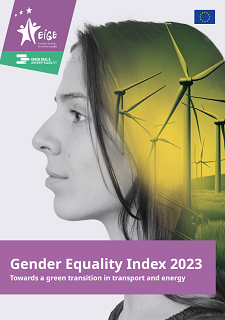The Gender Equality Index 2023

date: 20/12/2023
The Gender Equality Index measures the degree of gender equality within the European Union (EU) and its Member States, assigning a score ranging from 1 to 100. A score of 100 indicates that a country has achieved complete equality between women and men. The Gender Equality Index is composed of six core domains (work, money, knowledge, time, power, health) that are integrated into the Index, supplemented by two additional domains (intersecting inequalities and violence). The 2023 report contextualises gender equality amid crises, emphasising the disproportionate impact on women and girls during shocks. The thematic focus is the socially fair transition under the European Green Deal, specifically in energy and transportation.
The EU scored 70.2 out of 100. This represents a moderate improvement of 1.6 points from the previous year, marking the most significant year-on-year increase since the Index's launch in 2013. Despite this progress, the EU is still on the journey toward achieving full gender equality. Country-specific analysis reveals significant variations, with Sweden leading at 82.2, surpassing 80 points, indicating a near-gender-equal society for 2.3% of the EU population.

Analysis of the longer-term developments of the overall Gender Equality Index and its variability across Member States shows a mean improvement in the Index, accompanied by a decline in variation for the period 2010-2021. This means that differences between Member States are decreasing, pointing to a trend of upward convergence. Comparing each country’s trend against the EU average shows patterns of convergence and divergence at Member State level. Between 2010-2021, the following patterns are evident:
1. Catching up - Bulgaria, Cyprus, Greece, Croatia, Italy, Lithuania, Malta and Portugal have Index scores lower than the EU average but with faster improvements, reducing the gap between them over time.
2. Flattening – Belgium, Denmark, Finland, Ireland, the Netherlands, Sweden, and Slovenia have improved their Index scores. Their gender equality levels are higher than the EU average but their progress is slower than the EU average. As a result, gaps between these countries and the EU have narrowed over time.
3. Outperforming – Austria, Germany, Spain, France and Luxembourg perform better than the EU average on gender equality and progress more rapidly. Consequently, the gap between them and the EU is widening.
4. Slower pace – Czechia, Estonia, Hungary, Latvia, Poland, Romania, and Slovakia have improved their Gender Equality Index scores but are consistently and significantly lower than the EU average. In addition, their progress in gender equality is slower, ensuring growing disparities with the EU over time.

